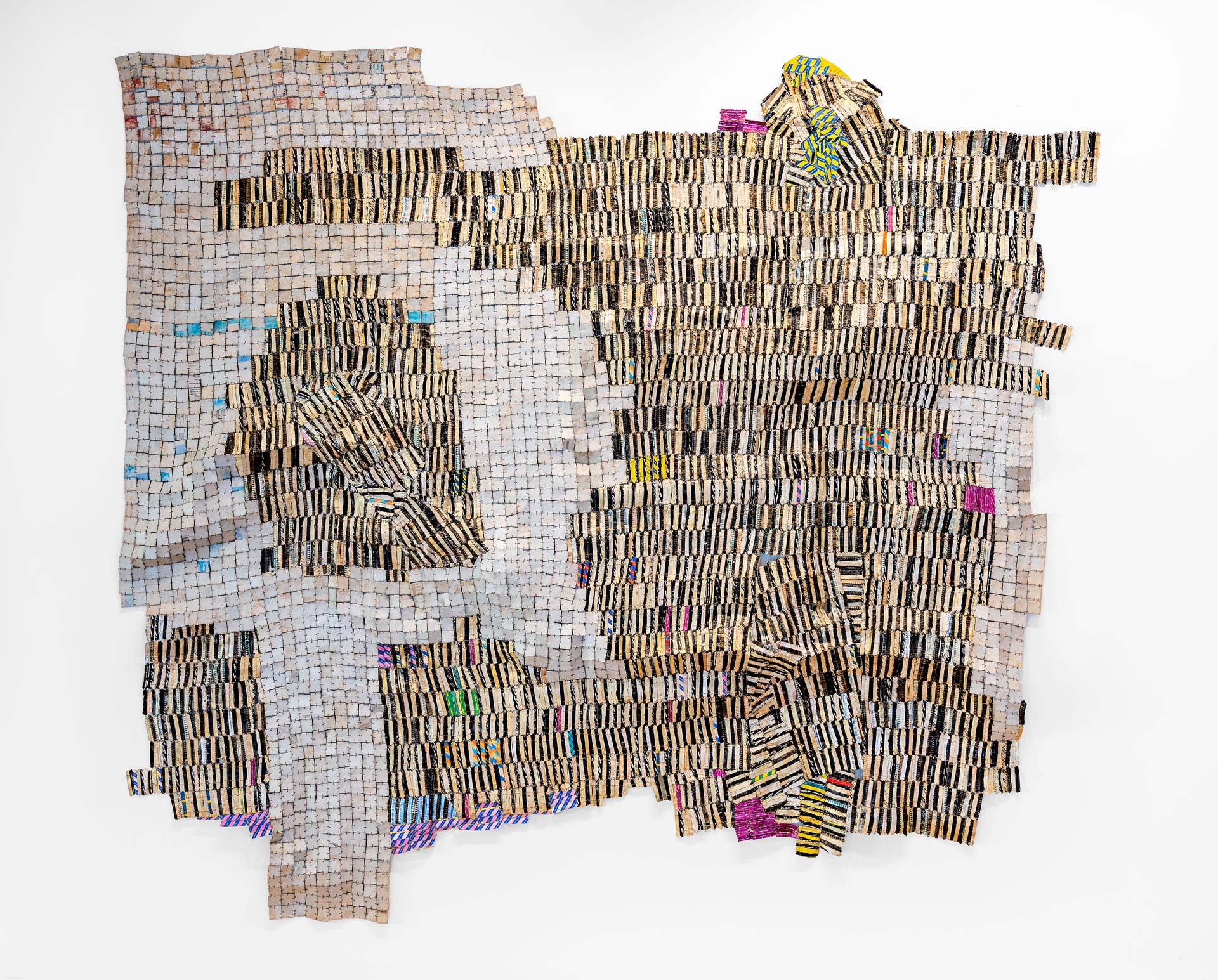El Anatsui is one of the most prominent African artists on the international scene. Born in Anyako (Ghana) in 1944, he moved to Nigeria in 1975 to teach at the University of Nsukka, where he spent much of his career as a professor of sculpture.
Although Anatsui initially practised traditional sculpture in wood, he soon began to experiment with other materials and techniques. In the late 1990s, he pioneered a new art form, producing large-scale works from found metal waste.
His works are composed of thousands of small industrial metal pieces, which are carefully selected, cut and joined together. The pieces are often connected with wire and hung on walls or installed on the floor, creating a dense metal texture. Anatsui uses these works as a way of reflecting on colonialism, since many of the discarded elements come from that era, while drawing connections, at the same time, with highly topical issues such as consumerism, waste and the environment.
The unique style of his works has been compared to spider’s webs or to the clothing worn by African kings, though on the other hand it is strongly influenced by the Western world, especially by the work of the abstract painter Jackson Pollock, since, after all, these installations are great abstract works. Given the elasticity of the materials from which they are made, he invites them to adopt new shapes in each setup.
In addition to his artistic achievements, Anatsui has received numerous honours and awards for his contributions to the art world, including the Golden Lion for Lifetime Achievement at the 2015 Venice Biennale, an honorary doctorate from Harvard University (2016) and the Praemium Imperiale for Sculpture in 2017.
El Anatsui’s works can be found in some of the world’s most prestigious art collections, including the permanent collections of the Metropolitan Museum of Art in New York, the Museum of Modern Art (MoMA) in New York, the National Museum of African Art of the Smithsonian Institution in Washington, DC, the British Museum in London and the Vatican Museums, among many others.
The Hortensia Herrero collection includes a large-scale work by El Anatsui made from waste materials such as liquor bottle caps joined together with copper wire.
